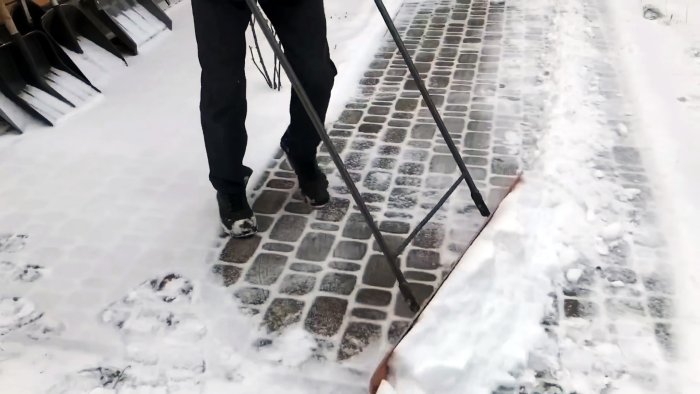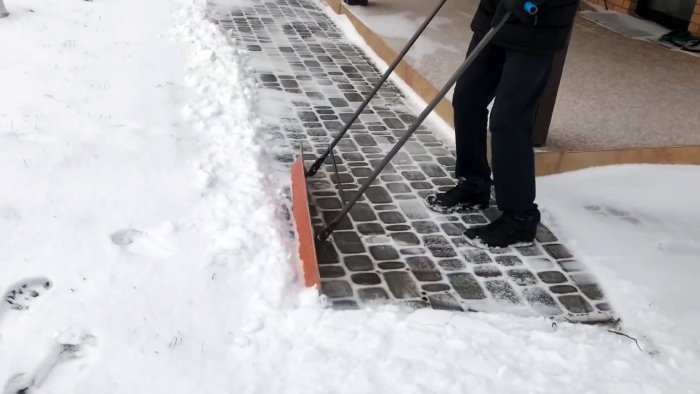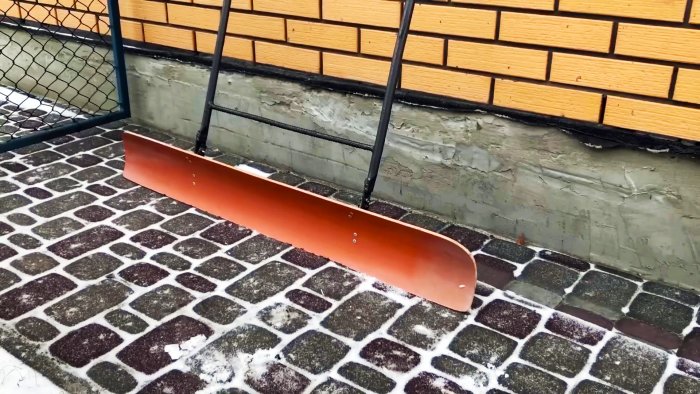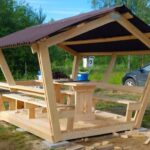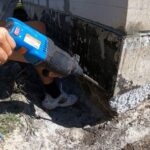It is not difficult to make a scraper for removing freshly fallen snow with your own hands from available and even waste materials, which will last at least 10 years. Its snow removal capabilities are an order of magnitude superior to both impractical and inconvenient factory products of this type and homemade products. Removing snow with the proposed scraper is convenient, quick, and very easy.
Previously, inconvenient, bulky, and heavy plywood boards were used to clean large areas and long paths. Now they have been completely replaced by scrapers, which will be discussed below. They can be made to any length and height depending on the area and the thickness of freshly fallen snow to be removed.
Although the working edge of the plastic scraper, in contact with the base of the platforms and paths, is gradually erased, this process occurs very slowly and evenly along the entire edge of the scraper, so it will last for at least 10 years of intensive use. With this scraper, you can remove a layer of snow up to 15-20 cm thick.
Making a snow scraper
To make the proposed scraper, you will need a used plastic pipe for external sewerage with a diameter of 250 mm, from which you can make 3 scrapers, different in height and length. To attach the handle to the scraper and adjust its installation relative to the scraper, bend 2 metal plates in an arc, the radius of which corresponds to the outer curvature of the sewer pipe.
We vertically weld one more, but already straight, plate to the center of the arc-shaped plates in the longitudinal direction.
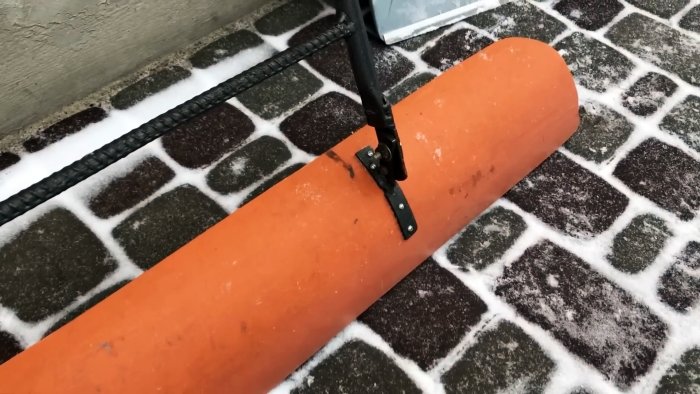
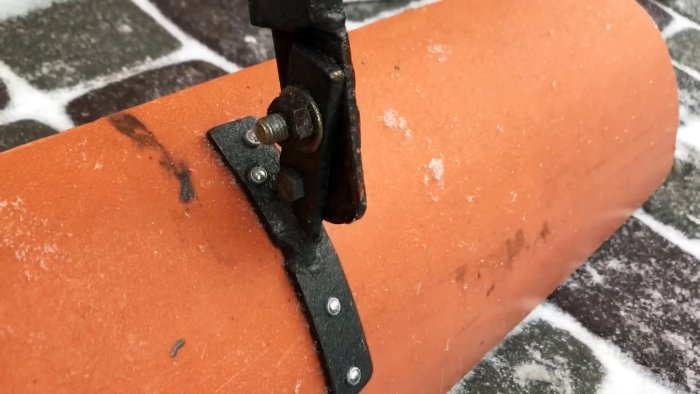
We drill matching holes in the arc-shaped plates and in the scraper and connect them with one-sided rivets in the amount of 4-5 units for each of the two brackets.
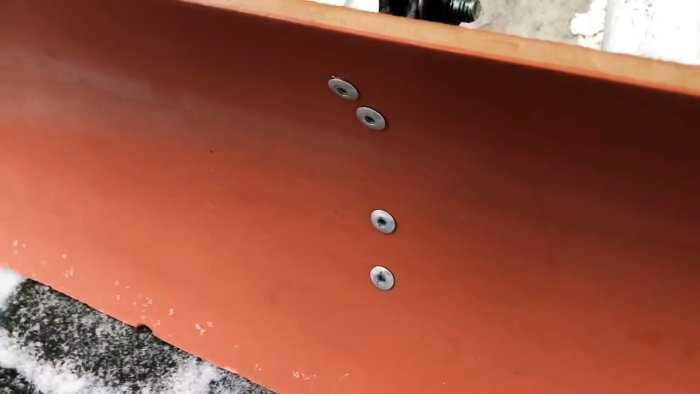
We screw the handle, welded from tubes or profiles, to the fastening points using bolts and nuts. The angle of attack, or the angle of inclination of the scraper relative to the horizontal, can be adjusted by raising or lowering the handle itself. This characteristic is selected for each person individually, depending on anthropological indicators and the thickness of the snow cover, and is fixed by tightening the bolts.
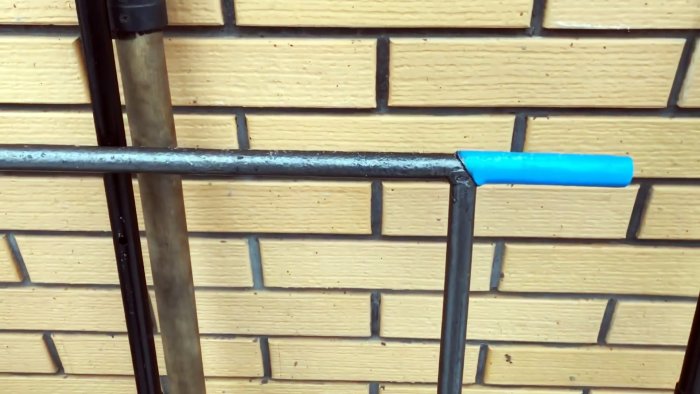
Closer to the scraper and parallel to it, between the side posts of the handle, it is necessary to weld a jumper to increase rigidity and evenly distribute the load between the fasteners. For ease of operation and reliable holding, we place hot pieces of polyethylene pipes on the ends of the handles.
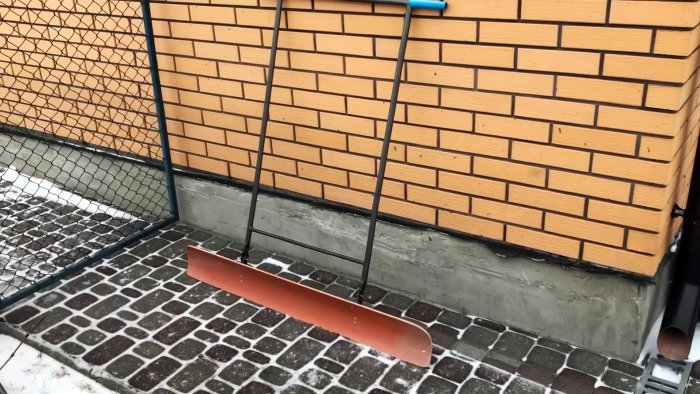
We repeat once again: for snow removal, no shovel or factory analogs can compete with this scraper.
